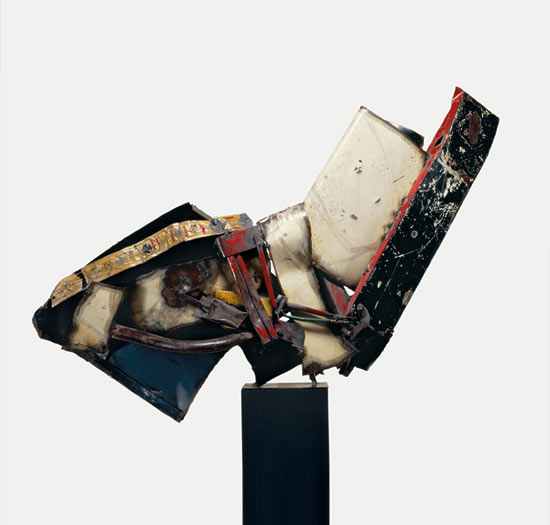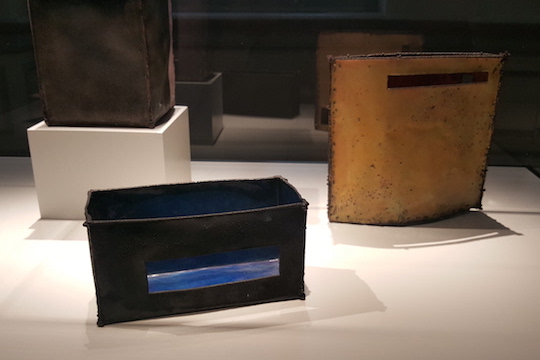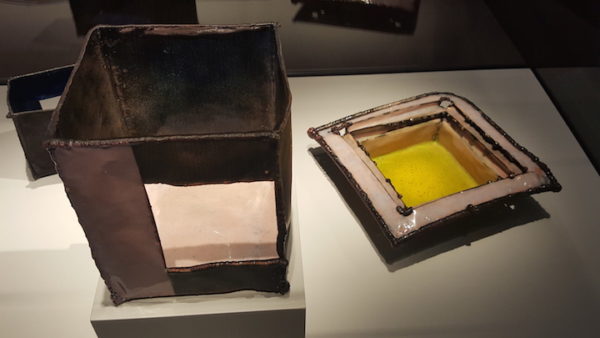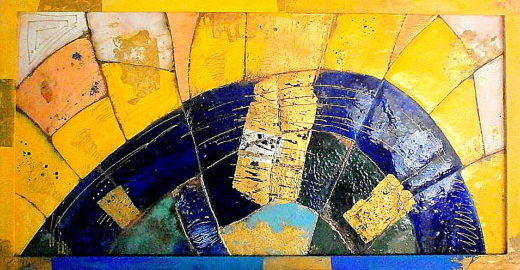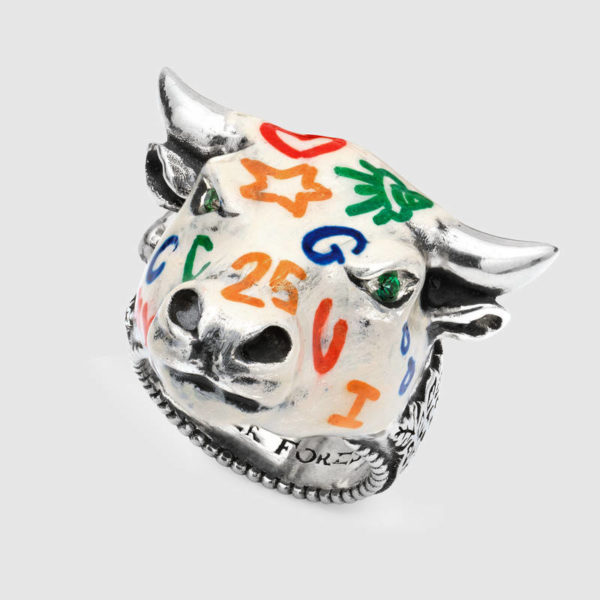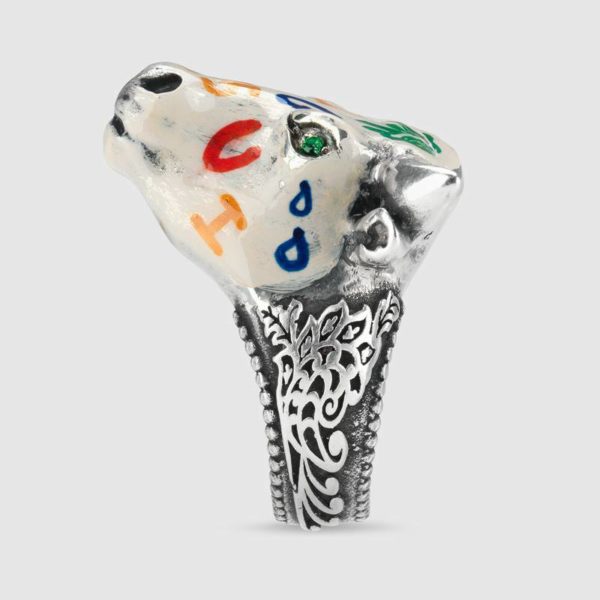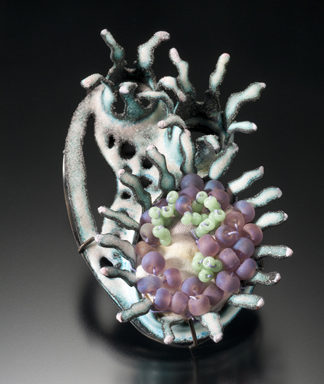
Brooch, Kathryn Osgood
Kathryn Osgood worked as an engineer for a small, family-owned telephone company in rural Maine for almost 20 years before starting a second life as an artist, jeweler, and enamelist. After studying with Linda Darty and Bob Ebendorf at East Carolina University, she moved to the Outer Banks of North Carolina, where she heads the Professional Crafts Jewelry Program at College of The Albemarle in Manteo.
Osgood’s work pushes the boundaries of enameling, using fold-forming, varied surfaces, and non-traditional materials to create tactile, sculptural pieces. Osgood will share her expertise in her upcoming workshop, Enamels: Exploring Texture, Color and Form. The workshop runs from May 18 – May 20, 2018, at the Crucible in Oakland, CA.
There are still slots available in this workshop–register now!
What drew you to enamel as your preferred medium?
I have always loved color. It elicits an emotional response from the viewer; it can be calming, sensual, exciting, joyful. Before I became a jeweler and enamellist, I was working as a textile artist, doing surface design, painting and dyeing fabric and creating wall hangings and quilts. When I took my first metals class, I was hooked. I loved working with metal; how it allowed me to create dimensional work. It could be hammered, shaped, and formed. I fell in love with the material, but I really missed the element of color.
When I discovered enamel, I found a way to bring color back into my work. Layering opaque and transparent enamels allows me explore an almost unlimited rich color palette.
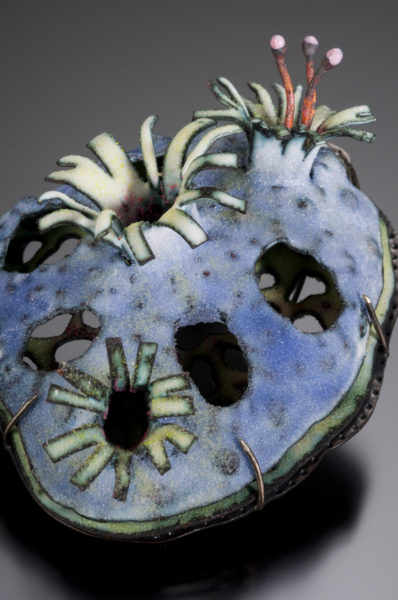
Ocean Brooch, Kathryn Osgood
How did you become intrigued with textured dimensional surfaces?
When I began working with metal and was fabricating jewelry from sheet metal, I was not satisfied with the idea of decorating a flat surface. I wanted to create pieces that were more sculptural, to take advantage of the plasticity of metal, of its ability to be formed into organic shapes. I began exploring the natural forms around me: magnolia pods, pine cones, leaves. I was intrigued by the textures found in nature and I wanted to replicate them, creating pieces that were more organic.
I enjoy exploring ways to from metal by hammering, dapping, bending, fold forming, shell forming, and die forming. I like my pieces to have a tactile quality, to invite the viewer to touch. I want them to feel good, to entice with both texture and color.
Who have been your mentors?
There are so many talented enamelists whose work inspires me, so it is hard to just name a few.
I was lucky enough to study at East Carolina University with Linda Darty and Bob Ebendorf. Linda Darty introduced me to enameling and the world of color on metal. Linda is a master enamellist and she generously shared her extensive knowledge of enameling and was a supportive and encouraging teacher. Linda continues to impress me with her beautiful work and with her love for the art of enameling. Bob Ebendorf is also a mentor and generous teacher. His knowledge of metalsmithing and his adventurous creative spirit continue to inspire me in living a creative life.

Osgood on the North Carolina coast
What inspires your work?
I live on Roanoke Island, off the coast of North Carolina. Since moving to the Outer Banks area, my work has changed to reflect my environment. The colors and textures of the sand and the water that surround my coastal home inform my work. In the early mornings, I often walk on the beach with my dog, Lola, picking up pieces of shells and driftwood that have washed in with the tide. My pieces are based on marine plant and animal forms, their textures and colors informed by the shell fragments that I have collected.
Find more of Osgood’s work on her website.


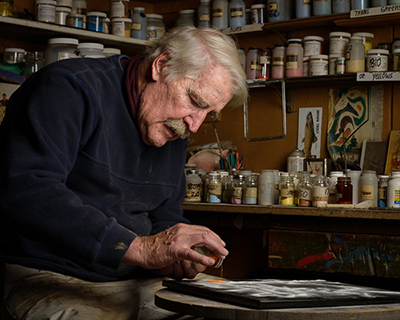
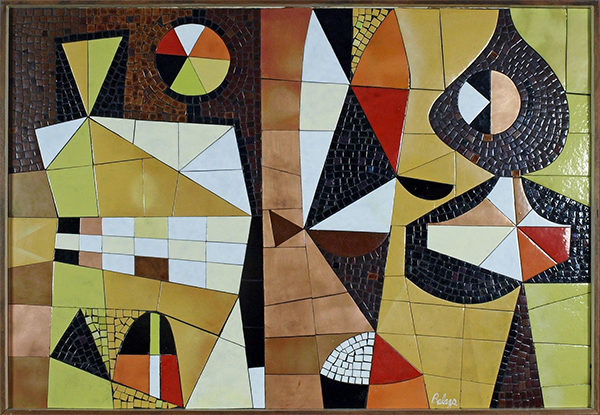
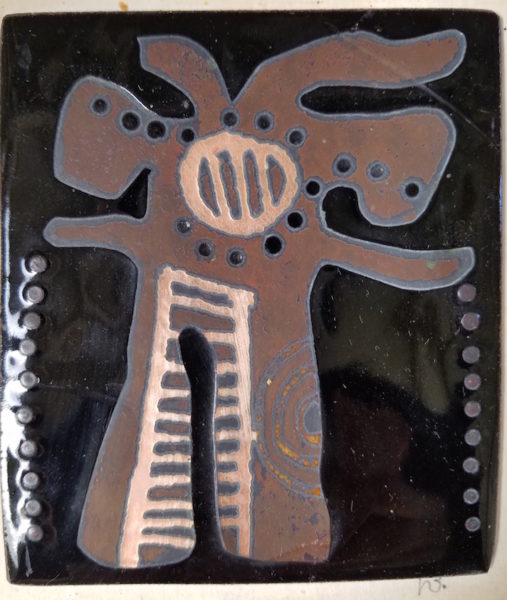
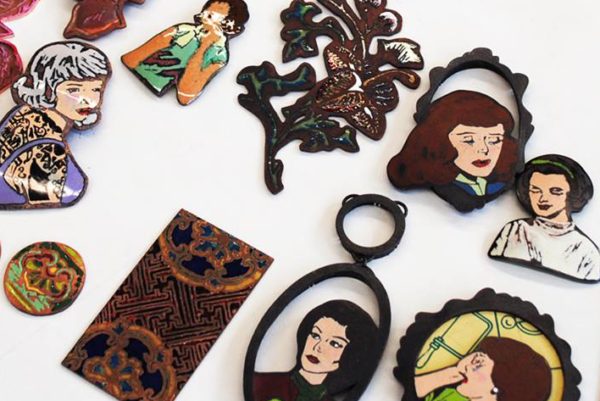
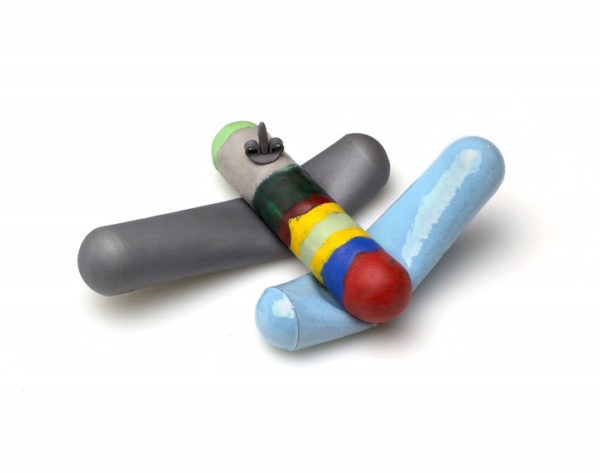

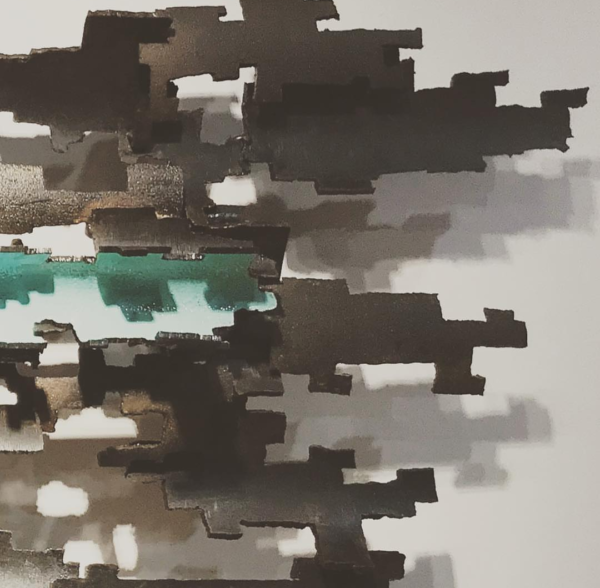
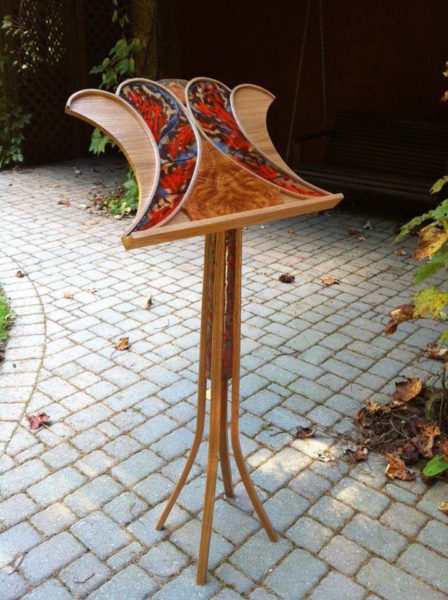
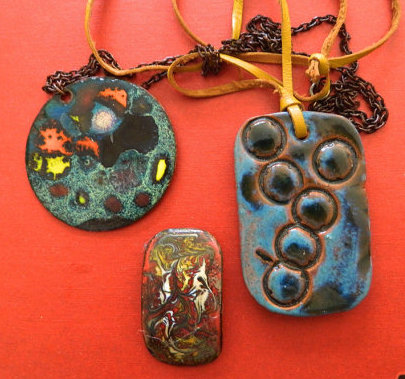 Quick: If I told you I’d bought an enameled pendant, what would come to mind? Something clumpy and heavy, with garish colors? Maybe a small, jewel-toned piece, carefully polished?
Quick: If I told you I’d bought an enameled pendant, what would come to mind? Something clumpy and heavy, with garish colors? Maybe a small, jewel-toned piece, carefully polished?
